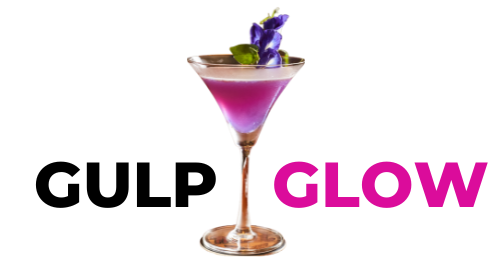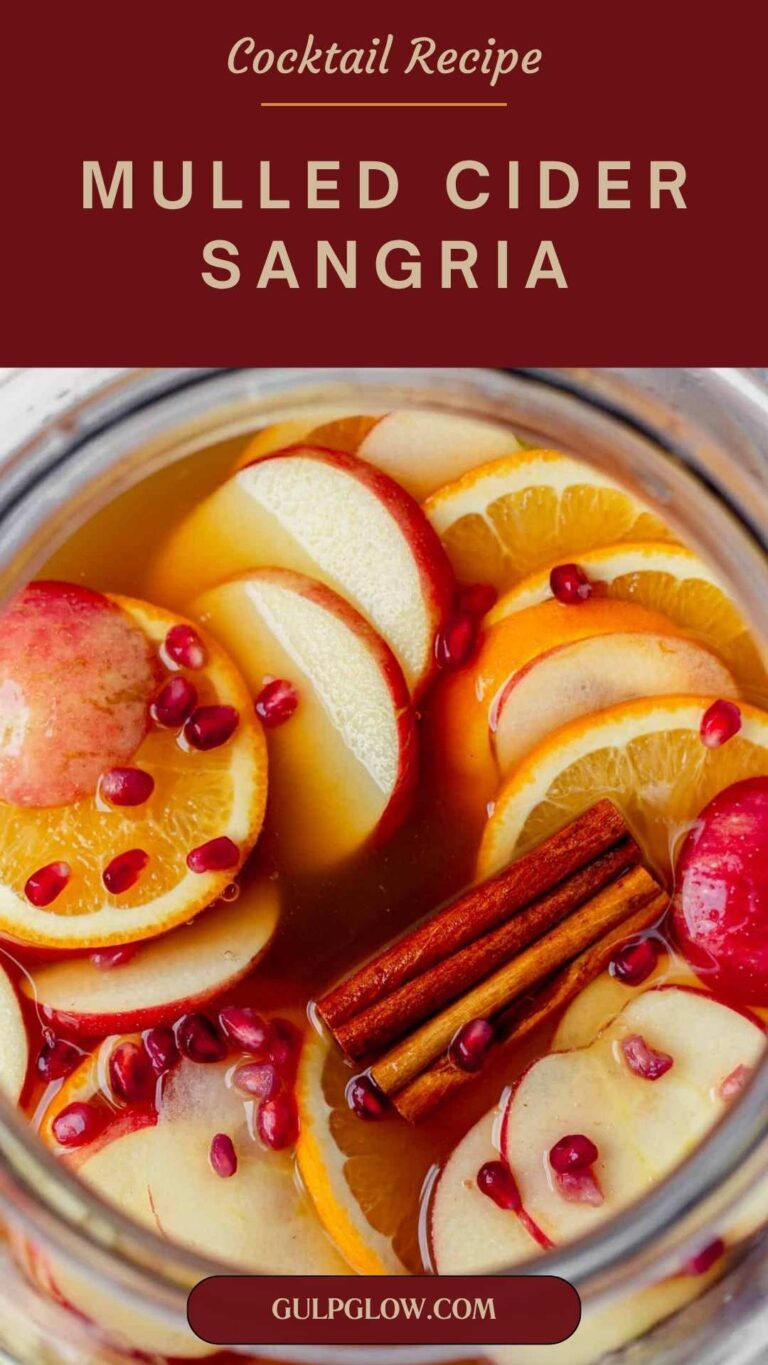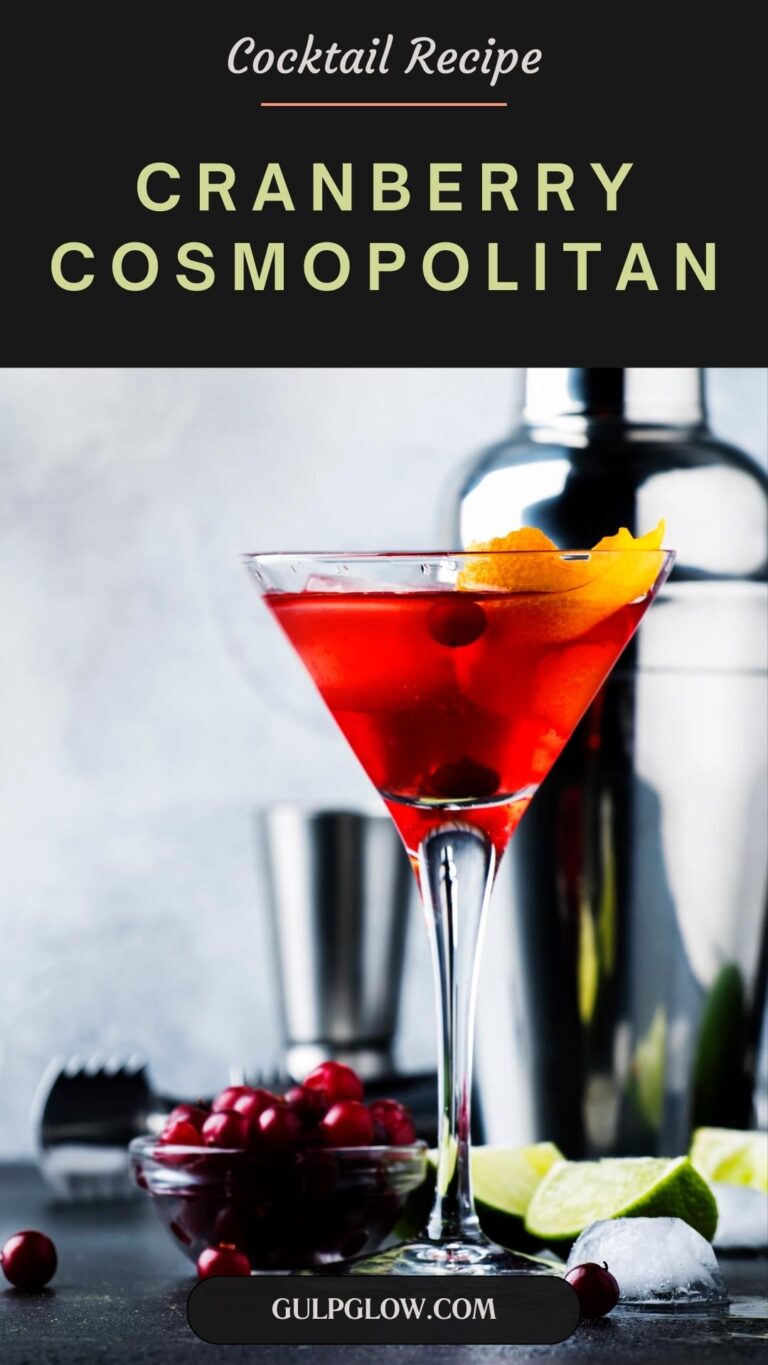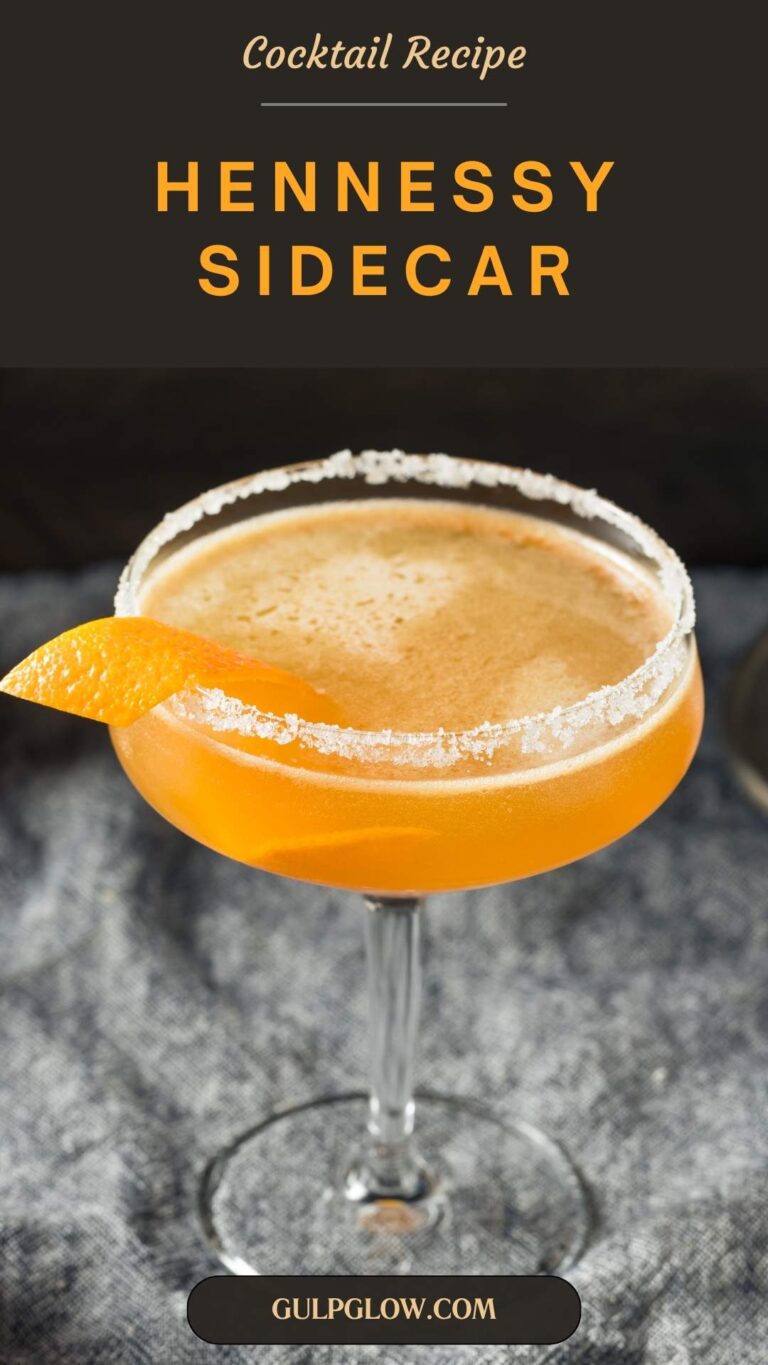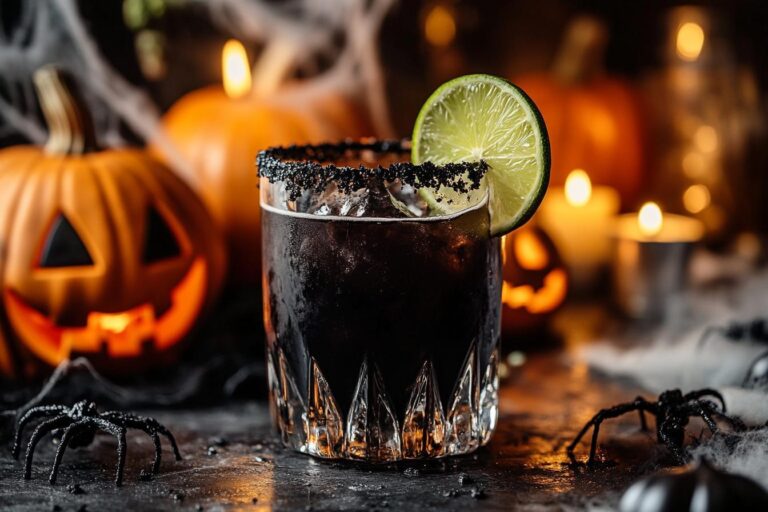Sidecar: A Sharp-Suited Classic from Bonfire of the Vanities
The Sidecar is a cocktail that drips with the kind of sharp elegance and old-money bravado that fits Bonfire of the Vanities like a tailored double-breasted suit. With its golden hue and citrus-tinged sting, the Sidecar is confident, refined, and just a touch sour—much like the world Tom Wolfe captures in his novel and Brian De Palma’s 1990 film adaptation.
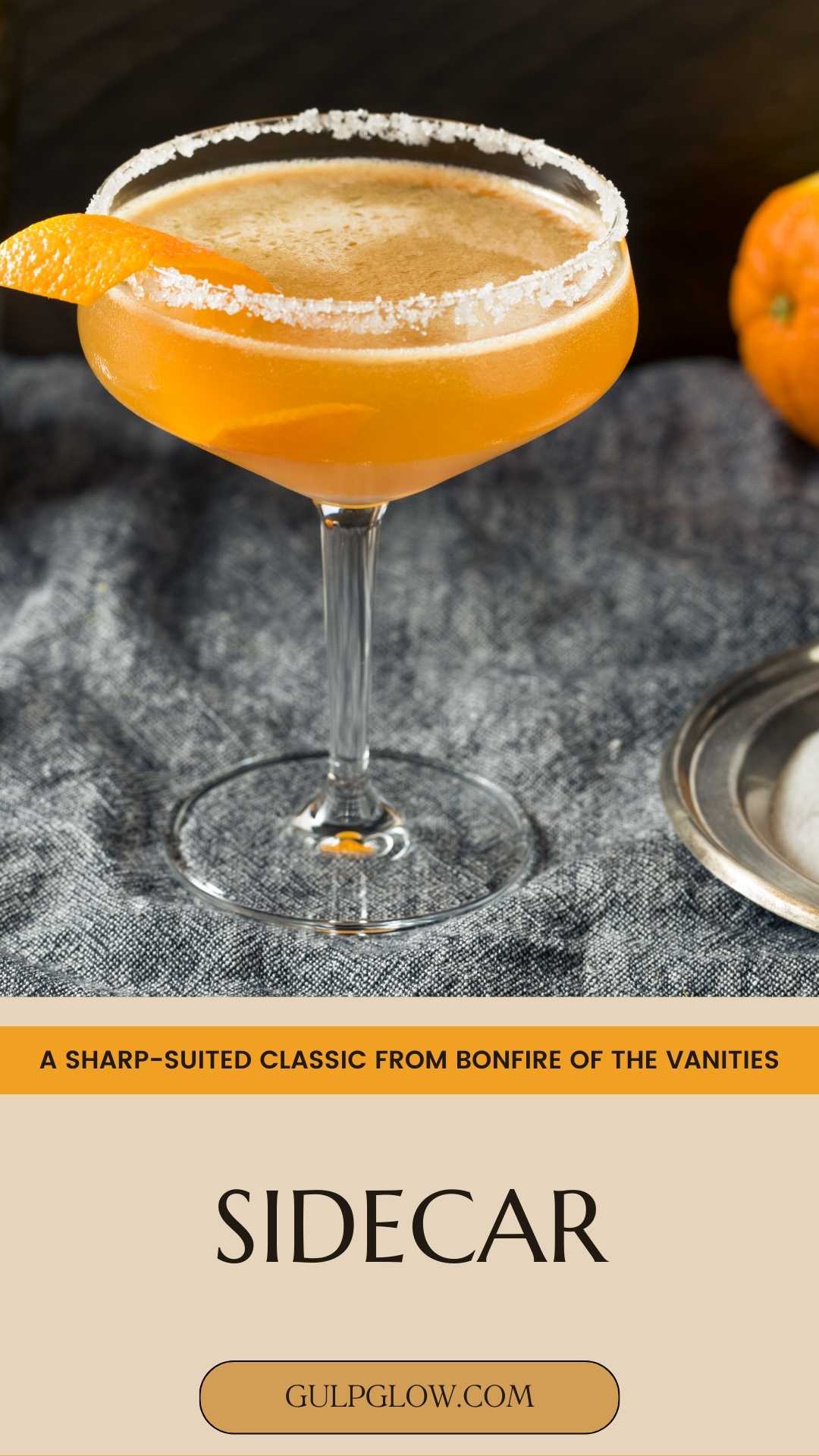
In Bonfire of the Vanities, the Sidecar isn’t a prop—it’s a character in its own right. Ordered by Gordon Gekko-types and Wall Street alphas, it’s the cocktail equivalent of a smug grin behind gold cufflinks. You can practically hear the sound of the shaker echoing through the mahogany-paneled halls of Manhattan’s power circles. I first tried a Sidecar at a hotel bar in Midtown Manhattan, surrounded by lawyers in bespoke suits and barstools upholstered in leather. One sip—sharp, boozy, and refined—and I got it: this was a drink that said, I’ve arrived.
The Sidecar is a close cousin of the Margarita, but with Cognac and gravitas. A blend of brandy (or Cognac), orange liqueur, and lemon juice, it’s a punchy, tart, and deeply satisfying cocktail that walks the line between indulgence and restraint. It doesn’t ask for attention—it expects it.
Quick Facts: Sidecar Cocktail
Method: shaken
Flavor profile: citrusy, dry, boozy
How to serve it: straight up
Glassware: coupe or Nick & Nora glass
Alcohol content: ~24–28% ABV, 22–25 grams of alcohol per serving
Ingredients
- 2 oz Cognac or high-quality brandy (VSOP or better preferred)
- ¾ oz orange liqueur (Cointreau or Grand Marnier)
- ¾ oz fresh lemon juice
- Optional: superfine sugar for rim
- Garnish: orange twist or lemon twist
Cognac is the backbone here—smooth, aromatic, and rich with fruit and oak. Orange liqueur adds sweetness and complexity, while lemon juice brings the acidic lift that balances the drink.
Use fresh lemon juice—bottled versions will flatten the flavor. Cointreau is preferred for its drier style, while Grand Marnier adds weight and depth. For a slightly softer version, reduce the lemon juice to ½ oz or increase the liqueur to 1 oz.
The sugar rim is optional. Some purists avoid it, but in Bonfire of the Vanities territory, a touch of sweetness at the edge feels right at home.
Equipment Needed
- Cocktail shaker
- Jigger
- Fine mesh strainer
- Citrus press or hand juicer
- Coupe glass
- Plate (for sugaring the rim, if using)
- Y-peeler or channel knife (for twist)
This is a cocktail that rewards precision. Chill your glass beforehand for maximum crispness, and shake hard to integrate and aerate the citrus.
Step-by-Step Instructions
- Prepare the glass: Optional—run a lemon wedge around half the rim of a coupe glass, then dip in superfine sugar. Chill the glass in the freezer.
- Add ingredients: In a shaker, combine 2 oz Cognac, ¾ oz Cointreau, and ¾ oz fresh lemon juice.
- Shake: Fill the shaker with ice and shake hard for 15–20 seconds.
- Strain: Double strain into the chilled coupe glass to remove ice shards and pulp.
- Garnish: Express an orange or lemon twist over the drink and drop it in or rest it on the rim.
That’s all—sharp, simple, and damn near perfect.

Flavor Profile and Tasting Notes
The Sidecar hits you with citrus up front, then leans into warm oak, orange peel, and dried fruit from the Cognac. The lemon juice provides a crisp, lip-smacking sourness, while the orange liqueur adds subtle sweetness and bitter orange depth.
The mouthfeel is clean and bright, but substantial. It’s both a refreshing aperitif and a proper cocktail—one that holds its own against even the boldest meals.
Pair it with dishes that echo its citrusy edge or rich, decadent ingredients: foie gras, duck à l’orange, lemon-roasted chicken, or creamy pastas. For dessert, go for orange custards or lemon tarts.
Garnishing and Presentation
The Sidecar deserves a look as sharp as its taste:
- Orange or lemon twist: Express over the drink for aromatic lift. Twist it tightly to release the oils and drop it in or hook it on the rim.
- Sugar rim (optional): Adds contrast to the tartness and nods to its vintage roots. Sugar half the rim for a more modern touch.
Serve it in a chilled coupe or Nick & Nora glass to concentrate the aroma and show off that rich, golden hue. Presentation should feel elegant, confident—Upper East Side after 5 p.m.
Pairing Suggestions
The Sidecar complements refined, richly flavored foods:
- Seared duck breast with orange glaze: A natural flavor echo.
- Charcuterie boards: Especially with pâté, blue cheese, and candied citrus.
- French onion soup: The Cognac pairs perfectly with caramelized flavors.
- Almond biscotti or madeleines: For a light dessert pairing.
- Orange crème brûlée: A luxurious dessert match.
Also pairs beautifully with sharp conversations and a soundtrack of 1980s classical-meets-saxophone.
Cocktail History and Trivia
The Sidecar was likely invented in Paris during World War I, with both the Ritz Hotel in Paris and Harry’s Bar claiming ownership. It became popular in London shortly thereafter and spread across Europe and the U.S. during the roaring twenties.
Named after the motorcycle sidecar, the drink supposedly honored a military officer who was often chauffeured in one. By the time of Bonfire of the Vanities, it had become a symbol of taste, wealth, and pretense—the perfect cocktail for the gilded illusions of Manhattan’s elite.
The original recipe used a 2:1:1 ratio (Cognac: liqueur: lemon), which modern bartenders have often adjusted to the now-common 2:¾:¾ for better balance.
Serving Suggestions
The Sidecar is best served when you want to make a sharp impression:
- Cocktail parties and formal dinners
- Power lunches with polished company
- Retro nights with French jazz or literary flair
- Themed movie nights featuring Wall Street, Bonfire of the Vanities, or 1980s New York classics
Serve straight up, ice-cold, and in the best glass you’ve got. It deserves nothing less.
Alcohol Content and Alternatives
At 24–28% ABV, the Sidecar is a strong, focused cocktail meant for sipping. It’s excellent as a pre-dinner drink, waking up the palate without overpowering it.
Low-ABV alternative:
Use 1 oz Cognac, ½ oz orange liqueur, and ½ oz lemon juice, shaken and topped with sparkling water for a lighter spritz version.
Mocktail version:
Mix fresh lemon juice with orange blossom water, honey syrup, and seedlip spice (or black tea concentrate). Shake and serve with an orange twist for a zero-proof version that still has bite.
Frequently Asked Questions (FAQ)
Do I need to use Cognac?
Not strictly. Any high-quality brandy will work, but Cognac adds refinement and authenticity.
Is the sugar rim necessary?
No, it’s optional. It adds visual appeal and softens the sourness but is not required for a balanced drink.
Can I make it sweeter?
Yes—use Grand Marnier (which is sweeter than Cointreau) or increase the orange liqueur to 1 oz.
Can I batch this cocktail?
Yes, mix all the ingredients and chill ahead of time, then shake with ice and strain per serving.
What if I don’t have a shaker?
Use a mason jar or any sealable container. Shake hard, strain well.
Sidecar Cocktail Recipe
Ingredients
2 oz Cognac or brandy
¾ oz Cointreau or Grand Marnier
¾ oz fresh lemon juice
Optional: sugar for rim
Garnish: orange or lemon twist
Directions
- Optional: sugar the rim of a chilled coupe glass.
- Shake all ingredients with ice.
- Double strain into the glass.
- Garnish with twist. Serve immediately.
Conclusion
The Sidecar is the cocktail version of a luxury sedan: smooth, classic, and designed to impress without saying too much. Whether you’re revisiting the biting satire of Bonfire of the Vanities or just want to feel like you’re sipping among New York’s elite, this drink delivers timeless cool in every citrus-kissed sip.
Next up, we’re heading into bubbly territory with a drink that’s all brunch and brightness—the French 75 is coming soon.
